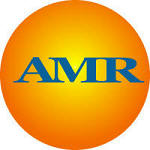AMR Labs
817-366-8376
MortarLab@gmail.com
Mixing Mortar for Brick Pointing
There are some basics that you should know about mixing mortar for repointing brickwork before you get started making mortar and repointing mortar joints. Among these are matching mortar for repointing, which sand to use in your mortar mix, ratio of cement to sand for mortar mix, mortar to water mix ratio, and how to mix mortar for brick pointing.
Mixing mortar for pointing brick is the most important part of the mortar joint repair. If mixing the mortar is not done properly, the repairs can be a disaster. This is why care must be taken to each portion of mixing mortar that I mention in the previous paragraph. I will explain each of these briefly in this article, but if you need more detailed instruction or want a pocket reference to guide you through this and other parts of how to repoint brickwork, we have a detailed brick repair guide available for download on this site and short videos to provide visual instructions.
Matching Mortar for Repointing Brickwork
Before you begin mixing mortar for repointing brickwork, you need to identify your existing mortar type and composition materials so you can get the right materials for making a pointing mortar mix for your repair. Using the wrong materials will not match the existing mortar and may cause more damage and make any repair of the mortar joints visible. Taking the time to match the existing mortar prevents damage to the bricks, increases mortar bonding, and allows the mortar color to match easier, making the repaired mortar joints disappear.
Matching mortar is done by testing a sample of the old mortar to determine the mortar composition and ratio of materials and can include a color match to make your repairs easier.
Mixing Mortar-Which Sand to Use
Sand composes the majority of the composition of mortar mix and in such dramatically affects the performance and color of the mortar. This is why it is so important to match the sand for repointing mortar. A brief analysis of the sand is provided in our mortar analysis, but you can add a sieve analysis of the sand for more detailed information about the sand gradation and particle shape if needed.
Mixing Mortar-Cement to Sand Ratio for Pointing Mortar Mix
As a general rule, when mixing mortar for pointing brickwork, your cement to sand ratio for the pointing mortar mix should be 1 part mortar mix to between 2.25-3 parts sand measured as loose damp aggregate. If you exceed the volume of sand in the ratio, the pointing mortar mix will have trouble drying, likely crumble, and be more difficult to work with having less pliability. When the quantity of cement and sand for mortar mix is too high in the ratio to sand, pliability is much better, but tends to set too rapidly and will crack. This is why it is important to match the cement to sand ratio for the pointing mortar mix to the existing mortar and maintain the correct ratio while mixing mortar for pointing brick.
Mixing Mortar- Water to Mix Ratio
When mixing mortar, you need to remember to add your water slowly and mix thoroughly before adding more water, and not assume the same amount of water will work the nest time you are mixing mortar. The mortar to water mix ratio will change with each batch due to the amount of moisture in the sand. While adding water and mixing mortar, stop adding more water when the mix looks slightly damp and continue mixing the mortar. It will allow the moisture in the sand to mix in the mortar and dissolve the cement mortar mix. This is called melting the sand. If you don't stop adding water, when the sand melts or releases its moisture, the mortar will be too wet. A good water to mix ratio when mixing mortar for pointing brickwork should make the mortar about the consistency between creamy peanut butter and a thick milk-shake (slightly sticky and pliable but not liquid).
How to Mix Mortar for Pointing Brickwork
After you have the various details about the existing mortar composition and the right materials for making a pointing mortar that match the existing mortar, you are ready to start mixing mortar for pointing brick mortar cracks. The best way to mix mortar for pointing is in small volumes. This is because pointing mortar joints requires far less mortar than replaying bricks, and a small volume of pointing mortar mix will repair large areas of cracked brick mortar.
Following your mortar composition and ratio formula from testing and matching the existing mortar, measure your sand and mortar mix materials into a bucket/wheelbarrow for mixing. Mix these materials dry before adding water. This helps prevent clumping. Then slowly begin adding water and mixing mortar per the method explained in the previous section. When you reach the right consistency, you have correctly mixed mortar for pointing brickwork and may begin installing mortar and repairing mortar cracks. If you need detailed instructions in how to repair mortar cracks, check out our brick repair guide.
AMR
Labs is dedicated to matching mortar.
This is why we offer various
forms of matching mortar including
mortar analysis,
mortar testing, sand
analysis, mortar composition testing, and custom
mortar color matching.
You can send samples of hardened mortar for testing to us at the following address.
AMR Labs
1525 Corona Dr.
Granbury, TX 76048
Click here to order/get prices and procedure for mortar testing/matching.
Related Articles
